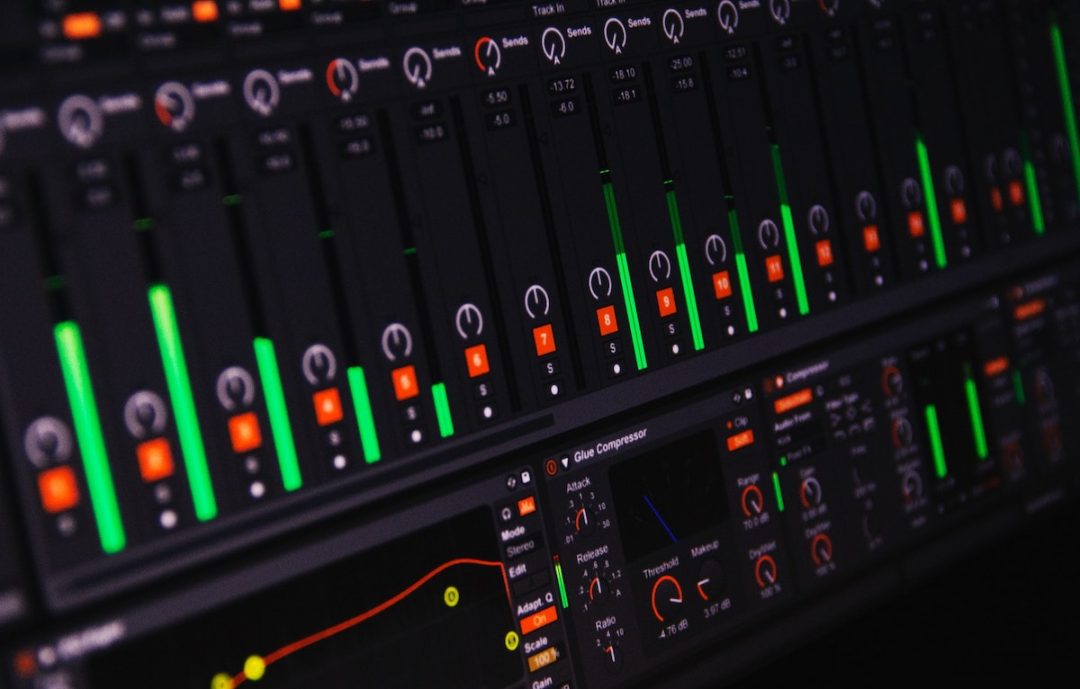Serial processing and parallel processing are two common techniques mixers use everyday. We’ll examine the differences between the two, and cover some basic scenarios where you’d want to employ one or the other.
What is serial processing?
Serial processing is more than likely something you’re using already, even if you didn’t know the name for it. It’s just a clever way of saying you’re using more than one of the same processor/plugin on an instrument or a group of instruments.
Let’s say you have a group of rhythm guitars, and on each track you have an individual compressor. And then you’re sending those rhythm guitars to a guitar bus, and you have another compressor on the bus gluing them all together. Finally, that rhythm guitar bus is routed to a main mix bus, and there’s another compressor on that. You guessed it; that’s serial processing.
It doesn’t just apply to compression, and it doesn’t only qualify as a series when effects are cascading across buses. Anytime you have multiple effects of the same type on a single track (EQ, compression, saturation, de-essing, etc.), we call it a serial chain.
The benefits of using serial processing
The main advantage of using more than one of the same effect type on a single instrument is that it keeps the processing subtle. It lets you get away with using liberal amounts of the effect without it sounding heavy-handed. We talk about serial all the time in relation to compression, because that’s one effect that can get out of hand quickly.
Sometimes a signal benefits from lots of gain reduction to sit properly in the mix. But if you let one compressor slam the track for 10 to 15 dB worth of gain reduction, that compressor would be working overtime. You’d hear it begin to pump or distort; it’d be obvious you’re crushing the heck out of it.
Instead, you can let a number of different compressors share the load. A fast compressor at the top of the chain to catch the loudest peaks, doing a few dB of gain reduction on average. Follow that up with a slower compressor for a bit of glue, doing another few dB of gain reduction. Maybe each of those are on the instrument itself, and you have another compressor at the end of the whole chain on a bus. You get the idea.
Whenever you want to use a lot of a certain effect, consider serial processing for a cleaner, more gentle application. Unless “over-the-top” is a creative choice, of course!
What is parallel processing?
Next we have parallel processing. To set up parallel effects, you first need to create an aux and send the original track to that, or duplicate the original track. You then put really aggressive processing on the aux or the duplicate and blend it in subtly with the main track. Another option is using the wet/dry mix on a plugin to dial in really aggressive settings, but backing the mix way off to create parallel processing.
Parallel processing gives you a sort of “best of both worlds” sound. On one hand, you have the original track with basic effects on it, and then you have this other version that’s super compressed, maybe a bit of interesting EQ on it, saturation, or whatever else. You get to fine-tune the balance of the heavily processed and the original track.
The benefits of using parallel processing
The biggest benefit of using parallel processing is being able to hear the unprocessed and the overly-processed tracks playing at the same time (to make one blend). You get to push everything too hard on one version of the track, and then just tuck it up underneath the “regular” channel to where it adds some aggression and some excitement without being overdone.
Parallel is sort of the opposite of serial processing in that it requires driving plugins super hard. You’ll get the most out of it when you peg the heck out of the VU or drive well into the red. From there, it’s up to you to decide how loud you want the processed versus unprocessed tracks to be.
Engineers will use parallel processing, especially compression, on mixes all the time. Drums and vocals sound great, and sometimes people will even parallel process their entire mix. This is really one of those techniques that you need to try for yourself to get a real grasp on it!
Want to learn more mixing fundamentals? Check out the Pro Mix Academy course Understanding Audio Essentials – EQ, Compression, Delay, and Reverb!
- SEE ALSO: The 5 Best Oscilloscope Plugins
